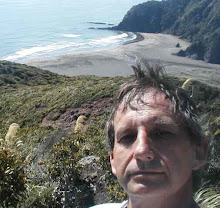Tannum Sands is a small beachfront town in Central Queensland, Australia. Like most Aussi towns it has a pub and like most aussi beachfront towns it has a surf club. And it really does have kangaroos running wild in the street.
The beaches are nice, if not spectacular. Tannum Sands lies in the shelter of the Great Barrier Reef which *is* spectacular. But being sheltered by the reef means that there isnt much surf, so this isnt the Gold or Sunshine coasts, which have miles of really great beaches. But then their beaches are backed by miles of high rise apartment buildings and ugly suburban development.
The nearest surf beach is about 100km south, a place called Agnes Water, which is going the way of the rest of the country and falling to residential development. The Tannum Sands beaches are backed by a few houses, park reserves, and casurina trees, and in most places you wouldnt know there was a town back there. I like it that way.
Not that this is total paradise. Just a few miles north (and clearly visible especially at night when it is lit up) is the worlds biggest bauxite refinery. The Gladstone region, where Tannum Sands is located, is pretty industrial. (But then Australia as a whole is little more than a strip mine with a beach around it.) And the reef is a center for tourist activities. There is a bit of farming (sugar cane and beef) nearby. In fact the slogan for the Rockhampton region is "from Ranch to Reef". (I thought "from Cattle to Atoll" had more of a rhyme to it...) The main street of Rockhampton an hour north of here (and the nearest big town) is decorated by life size, anatomically correct statues of bullocks.
So heres the setting... nice beach town, major industrial area, coral atolls and other tourist attractions nearby. Life here revolves around water and work: fishing, boating, diving, and producing about six million tons of alumina every year.
 So construction proceeds on the martins' nests, which are starting to look pretty wierd. They start as a layer of mud built out from the light fitting and initially looks like a bowl, but sealed against the roof above. But then they start to close in the end....
So construction proceeds on the martins' nests, which are starting to look pretty wierd. They start as a layer of mud built out from the light fitting and initially looks like a bowl, but sealed against the roof above. But then they start to close in the end.... until the thing looks more like a bottle. The opening is just wide enough for the birds to fit through.
until the thing looks more like a bottle. The opening is just wide enough for the birds to fit through.










